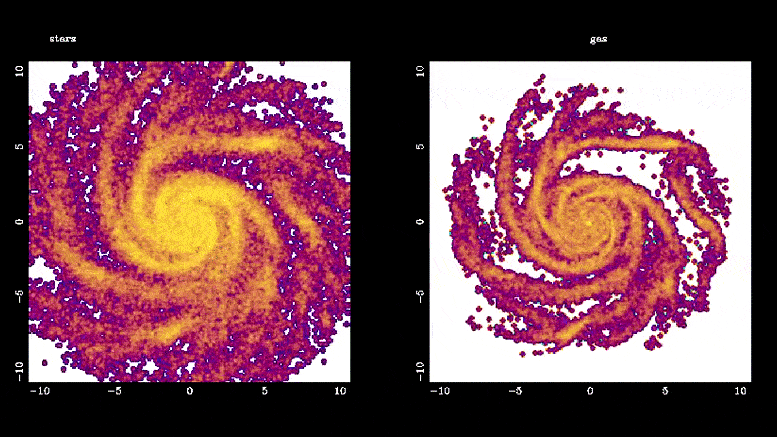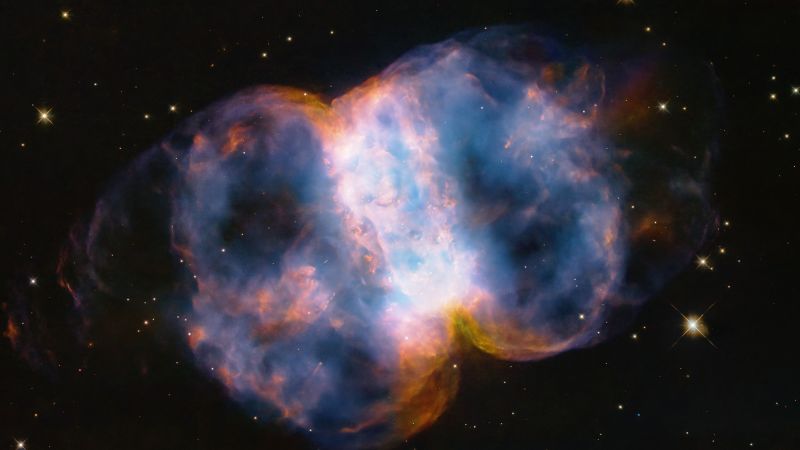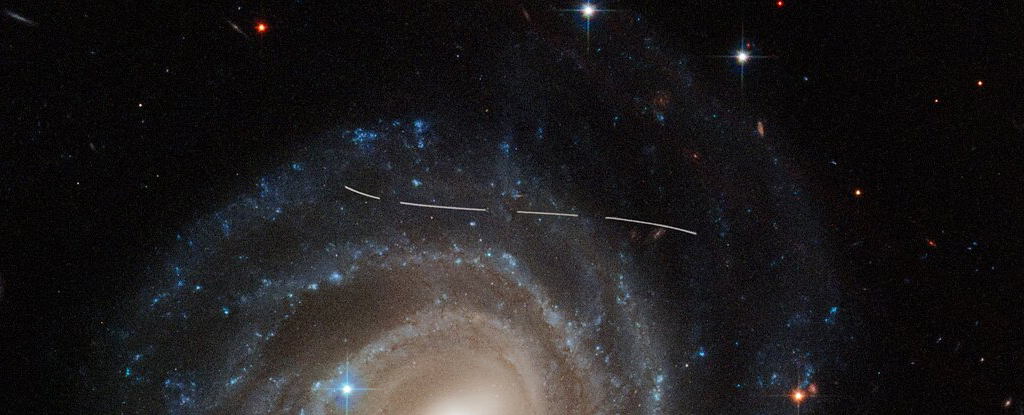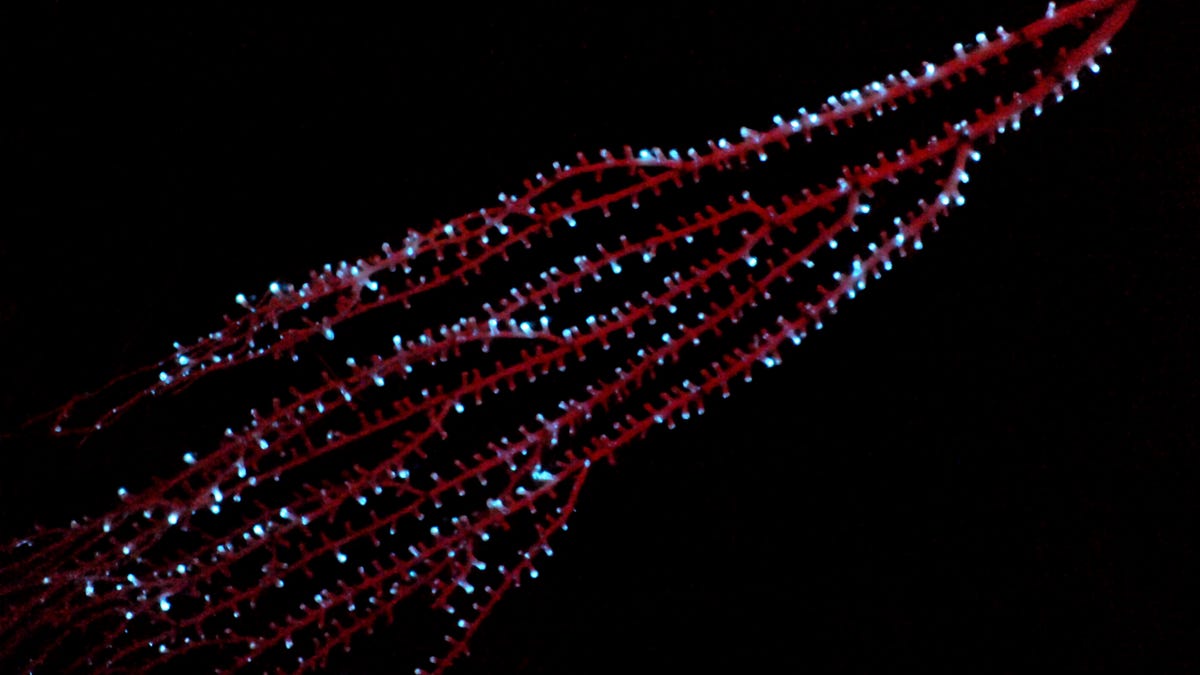
Tato simulace ukazuje, jak se tvoří hvězdné tyče (vlevo) a proudy plynu poháněné tyčí (vpravo). Hvězdné příčky hrají důležitou roli v galaktickém vývoji tím, že usměrňují plyn do centrálních oblastí galaxie, kde se rychle mění na nové hvězdy, 10 až 100krát rychleji než rychlost ve zbytku galaxie. Tyče také nepřímo napomáhají vzniku supermasivních černých děr v centrech galaxií tím, že nasměrují plyn část cesty. Kredit: Françoise Combes, Pařížská observatoř
nové fotky z[{“ attribute=““>NASA’s James Webb Space Telescope (JWST) reveal for the first time galaxies with stellar bars — elongated features of stars stretching from the centers of galaxies into their outer disks — at a time when the universe was a mere 25% of its present age. The finding of so-called barred galaxies, similar to our Milky Way, this early in the universe will require astrophysicists to refine their theories of galaxy evolution.
Prior to JWST, images from the Hubble Space Telescope had never detected bars at such young epochs. In a Hubble image, one galaxy, EGS-23205, is little more than a disk-shaped smudge, but in the corresponding JWST image taken this past summer, it’s a beautiful spiral galaxy with a clear stellar bar.
“I took one look at these data, and I said, ‘We are dropping everything else!’” said Shardha Jogee, professor of astronomy at The University of Texas at Austin. “The bars hardly visible in Hubble data just popped out in the JWST image, showing the tremendous power of JWST to see the underlying structure in galaxies,” she said, describing data from the Cosmic Evolution Early Release Science Survey (CEERS), led by UT Austin professor, Steven Finkelstein.

The power of JWST to map galaxies at high resolution and at longer infrared wavelengths than Hubble allows it look through dust and unveil the underlying structure and mass of distant galaxies. This can be seen in these two images of the galaxy EGS23205, seen as it was about 11 billion years ago. In the HST image (left, taken in the near-infrared filter), the galaxy is little more than a disk-shaped smudge obscured by dust and impacted by the glare of young stars, but in the corresponding JWST mid-infrared image (taken this past summer), it’s a beautiful spiral galaxy with a clear stellar bar. Credit: NASA/CEERS/University of Texas at Austin
The team identified another barred galaxy, EGS-24268, also from about 11 billion years ago, which makes two barred galaxies existing farther back in time than any previously discovered.
In an article accepted for publication in The Astrophysical Journal Letters, they highlight these two galaxies and show examples of four other barred galaxies from more than 8 billion years ago.
“For this study, we are looking at a new regime where no one had used this kind of data or done this kind of quantitative analysis before,” said Yuchen “Kay” Guo, a graduate student who led the analysis, “so everything is new. It’s like going into a forest that nobody has ever gone into.”
Bars play an important role in galaxy evolution by funneling gas into the central regions, boosting star formation.
“Bars solve the supply chain problem in galaxies,” Jogee said. “Just like we need to bring raw material from the harbor to inland factories that make new products, a bar powerfully transports gas into the central region where the gas is rapidly converted into new stars at a rate typically 10 to 100 times faster than in the rest of the galaxy.”
Bars also help to grow supermassive black holes in the centers of galaxies by channeling the gas part of the way.
Tato simulace ukazuje, jak se tvoří hvězdné tyče (vlevo) a proudy plynu poháněné tyčí (vpravo). Hvězdné příčky hrají důležitou roli v galaktickém vývoji tím, že usměrňují plyn do centrálních oblastí galaxie, kde se rychle mění na nové hvězdy, 10 až 100krát rychleji než rychlost ve zbytku galaxie. Tyče také nepřímo napomáhají vzniku supermasivních černých děr v centrech galaxií tím, že nasměrují plyn část cesty. Kredit: Françoise Combes, Pařížská observatoř
Objev příček během těchto raných věků otřásl scénáři vývoje galaxií několika způsoby.
„Tato časná detekce příček znamená, že modely vývoje galaxií mají nyní novou cestu skrz příčky, aby urychlily produkci nových hvězd v raném věku,“ řekl Jogee.
A existence těchto raných příček zpochybňuje teoretické modely, protože je třeba provést korekci pro galaktickou fyziku, aby bylo možné předpovědět správnou hojnost příček. Tým bude testovat různé modely ve svých nadcházejících dokumentech.

Montáž snímků JWST ukazuje šest příkladů galaxií s příčkou, z nichž dva představují dosud nejvyšší kvantifikované a charakterizované doby zotavení. Štítky v levém horním rohu každého čísla ukazují retrográdní čas každé galaxie, který se pohybuje od 8,4 do 11 miliard let (Gyr), kdy byl vesmír pouhých 40 % až 20 % svého současného stáří. Poděkování: NASA/CEERS/The University of Texas at Austin
JWST může odhalit struktury ve vzdálených galaxiích lépe než Hubble ze dvou důvodů: Za prvé, jeho větší zrcadlo mu dává větší schopnost shromažďovat světlo, což mu umožňuje vidět dál a s vyšším rozlišením. Za druhé, může vidět skrz prach lépe, protože pozoruje na delších infračervených vlnových délkách než Hubbleův teleskop.
Vysokoškoláci Eden Wise a Zilei Chen hráli ve výzkumu hlavní roli tím, že vizuálně zkoumali stovky galaxií a hledali ty, které vypadaly, že mají pruhy, což pomohlo zúžit seznam na několik desítek, aby je ostatní výzkumníci mohli analyzovat pomocí intenzivnějších výpočtů. . Blížící se.
Reference: „První pohled na z > 1 pruhy ve zbytku blízkého infračerveného snímku s JWST ranými snímky CEERS“ Yuchen Guo, Sharda Joji, Stephen L Finkelstein, Zili Chen, Aiden Weiss, Michaela P Bagley, Guillermo Barrow, Stegen & Witts, Dale D. Kosevski, Jehan S. Kartaltepe, Elizabeth J. McGrath, Henry C. Ferguson, Bahram Mobacher, Mauro Giavalescu, Ray A. Lucas, George A. Zavala, Jennifer M. Lutz, Norman A. Grojean, Mark Huertas-Company, Jesus Vega-Ferrero, Nimish P. Hathi, Pablo Arrabal Haro, Mark Dickinson, Anton M. Koekemoer, Casey Papovich, Nor Pirzkal, LY Aaron Yung, Bren E. Backhaus, Eric F. Bell, Antonello Calabrò, Nikko G. Cleary, Rosemary T. Cogan, MC Cooper, Luca Constantin, Darren Croton, Kelsey Davis Accepted, Alexandre de la Vega, Avishai Dekel, Maximilian Franco, Jonathan P. Gardner, Ben W. Holwerda, Taylor A. Hutchison, Viraj Pandya, Pablo G. Perez-Gonzalez, Swara Ravindranath, Caitlin Rose, Jonathan R Trump, Weichen Wang, přijato Astrophysical Journal Letters.
arXiv: 2210.08658
Dalšími spoluautory z University of Austin jsou Stephen Finkelstein, Michaela Bagley a Maximilian Franco. Desítky spoluautorů z jiných institucí pocházejí ze Spojených států, Spojeného království, Japonska, Španělska, Francie, Itálie, Austrálie a Izraele.
Financování tohoto výzkumu částečně poskytly Roland K. Blumberg Endowment in Astronomy, Heising-Simons Foundation a NASA. Tato práce čerpala ze zdrojů v Texas Center for Advanced Computing, včetně Frontera, nejvýkonnějšího superpočítače na americké univerzitě.

„Hudební učenec. Spisovatel. Zlý slanina evangelista. Hrdý twitter narkoman. Myslitel. Milovník internetu. Jemně okouzlující hráč.“






